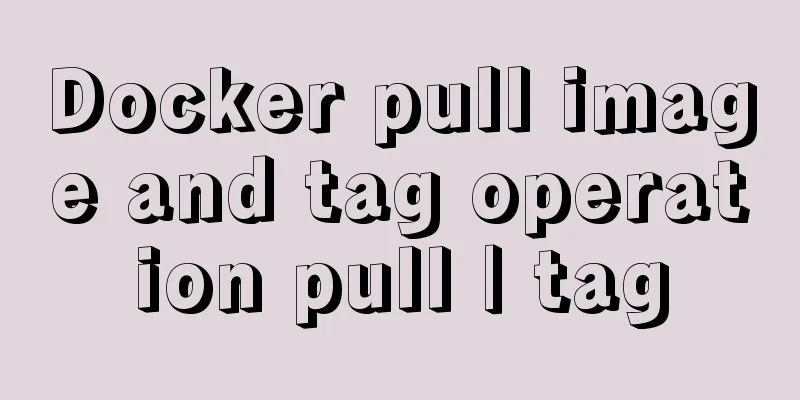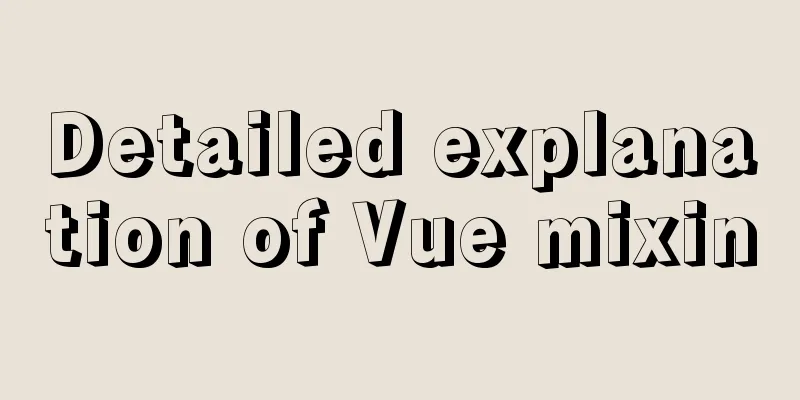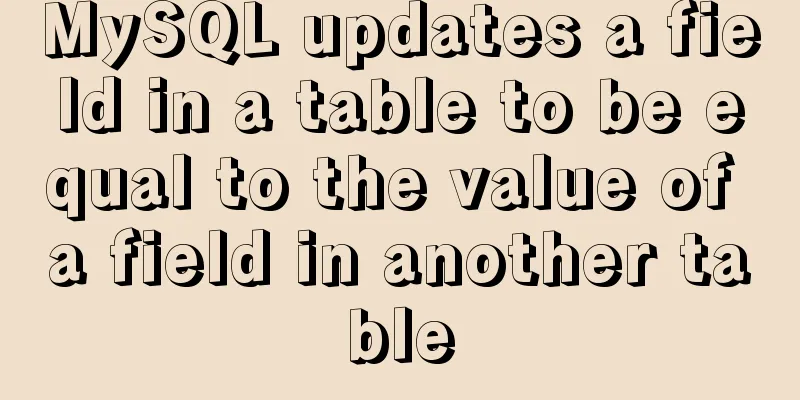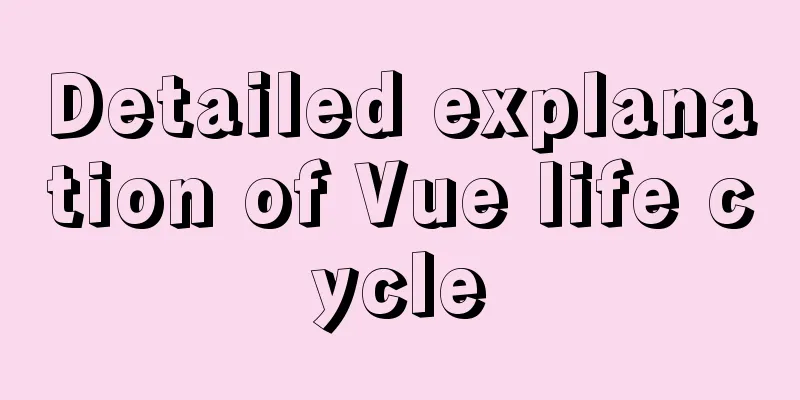Docker pull image and tag operation pull | tag

|
I re-read the source code of the Fabric project and found that there are many things I don't fully understand about the Docker part. As I read, I saw the use of docker pull to pull the Fabric image and the use of docker tag to rename the image. After a little thought, I found that although I have used it before, I didn't understand it very well and just muddled through. Now I have forgotten how to use it... 1. docker pullPull the image from the image source, generally from Docker Hub
for example: $ docker pull hyperledger/fabric-$IMAGES:$FABRIC_TAG Options: # -a Pull all images with different tags -a, --all-tags Download all tagged images in the repository # Ignore image verification, default option --disable-content-trust Skip image verification (default true) Let's actually try it out. The operating environment is the commonly used Ubuntu 16.04 1.1 Normal pull In fact, we can directly pull the latest version of the image. By default, the image with tag latest is pulled. for example: #Pull the java image, tag is latest $ docker pull java Using default tag: latest latest: Pulling from library/java 5040bd298390: Pull complete fce5728aad85: Pull complete 76610ec20bf5: Pull complete 60170fec2151: Pull complete e98f73de8f0d: Pull complete 11f7af24ed9c: Pull complete 49e2d6393f32: Pull complete bb9cdec9c7f3: Pull complete Digest: sha256:c1ff613e8ba25833d2e1940da0940c3824f03f802c449f3d1815a66b7f8c0e9d Status: Downloaded newer image for java:latest After the pull is complete, we can view the image we already have $ docker images REPOSITORY TAG IMAGE ID CREATED SIZE java latest d23bdf5b1b1b 20 months ago 643MB 1.2 Tag name pull From the above output, we can find that although only one Java image is pulled, there are multiple Pull completes during the pull process, including 5040bd298390 and fce5728aad85. This is because an image can be composed of multiple "layers", and such "layers" can be reused by other images (a bit like front-end components or modules) to form a new image. If you pull another image, some of which have already been downloaded, docker pull will only pull the metadata without repeatedly pulling the layers. Docker's image library uses content-addressed storage, and the image ID is a SHA256 digest that represents the configuration and "layers" contained in it. Let's prove it. Because I pulled java:latest, which is an image with the tag name latest, I need to find an image with the same version as latest but a different tag name (essentially the same image, but with a different tag name). The following results are found on Docker Hub:
Pull the image with tag name 8-jdk: $ docker pull java:8-jdk 8-jdk: Pulling from library/java Digest: sha256:c1ff613e8ba25833d2e1940da0940c3824f03f802c449f3d1815a66b7f8c0e9d Status: Downloaded newer image for java:8-jdk Obviously, the pull here does not see the "layer" information, and the sha256 value of the summary is exactly the same as the image with the tag name latest. In essence, these are two exactly the same images, consisting of the same "layers", so there is no need to pull them again. At this point, you may have the same question as me, "Exactly the same?" Does that mean there is only one of them in the operating environment? So whose tag name should be used? Let's look at the following output: $ docker images REPOSITORY TAG IMAGE ID CREATED SIZE java 8-jdk d23bdf5b1b1b 20 months ago 643MB java latest d23bdf5b1b1b 20 months ago 643MB We can clearly see that when viewing all images, there are images with the tag names 8-jdk and latest listed. java:8-jdk and java:latest have the same image ID because they are essentially the same image, just marked with different tags. Since the images are exactly the same, their "layers" are only stored once and do not consume additional disk space. That is, there is only one Java image in the operating environment, and the image can also be marked with different tags. For more information about images, "layers", and content-addressed repositories, please visit the new pit that has not yet been opened. In-depth analysis of Docker images, "layers", and storage drivers 1.3 Summary Pull Through the above two ways of pulling images, we get a sha256
Let's try to summarize how to pull the image: $ docker pull java@sha256:c1ff613e8ba25833d2e1940da0940c3824f03f802c449f3d1815a66b7f8c0e9d sha256:c1ff613e8ba25833d2e1940da0940c3824f03f802c449f3d1815a66b7f8c0e9d: Pulling from library/java Digest: sha256:c1ff613e8ba25833d2e1940da0940c3824f03f802c449f3d1815a66b7f8c0e9d Status: Image is up to date for java@sha256:c1ff613e8ba25833d2e1940da0940c3824f03f802c449f3d1815a66b7f8c0e9d The image of this summary is already up to date and does not need to be pulled. $ docker images REPOSITORY TAG IMAGE ID CREATED SIZE java 8-jdk d23bdf5b1b1b 20 months ago 643MB java latest d23bdf5b1b1b 20 months ago 643MB The mirror list remains unchanged. Here is a point of knowledge that summary can be used with FROM in Dockerfile:
This reference method, due to the specific summary, will fix the image to a specific version and will not be updated. If you need to use another version, you need to change the summary content. 1.4 Pull from other registries To reiterate, by default, docker pull pulls images from Docker Hub. Of course, we can set up to pull images from other registries:
Please note that you do not need to add http:// or https:// before the URL of the registration center. 1.5 Pull multiple images at once from the same image library Use docker pull -a to pull all images in the same image library. 1.6 Cancel pull To cancel the pull action, you can kill the pull process by pressing CTRL+c directly in the operation interface. 2. docker tagCreate a new tag for the source image
The image name is composed of each name component separated by a slash, such as library/java. Use a colon to separate name and tag, such as library/java:8-jdk. We can also add some prefixes before the image name to indicate that the image source is other registries or private registries, such as
2.1 Tag the image referenced by Name
Readers can try to see the differences and similarities between docker tag java java:byname and docker tag java lib/java:byname 2.2 Tag the image referenced by ID
2.3 Tag the image referenced by Name and Tag
2.4 Tagging images in private registries In order to upload the image to a private registry, you need to rename the image. The rules are:
Docker pull and Docker tag are frequently used commands. They are simple to use, but have many tricks. Readers can practice and try them on their own. postscript In fact, I have been in contact with Docker for a long time. How did you come up with the idea of writing this part? My original intention of writing was to accumulate knowledge. My superiors have always required me to quickly apply technology and create value. As a result, I may not know the true meaning of theoretical research, underlying principles, and even basic commands, but just be able to use them and know how to use them. Just like a driving school teaches students driving skills (or may not), but never teaches the composition (architecture) and operating mechanism (underlying principles) of the car. If your hands can shift gears and turn the steering wheel, and your feet can step on the clutch, accelerator, and brake, isn't that enough? You can drive. So why sedimentation? First, when someone asks you about some commands or principles, you hesitate and are unable to answer, because you have only memorized the instructions through the muscles of your fingertips, not to mention the principles or underlying principles. Secondly, I learned by analogy from other experiences. From being a front-end novice at the beginning, to later using the Spring Boot architecture to write Java applications, and now to learning to use Linux commands (shell), Docker, and Go to apply the blockchain framework HyperLedger Fabric for production, it seems like a big leap, but it is still the same field, the communication between people and machines. What I learned was to use different languages to communicate with machines that speak various machine languages. I was like a foreigner living in a machine country, able to read and write. On the road of practicing in the machine world, I am gradually drifting away from my initial enlightenment of HTML, CSS, and JavaScript. It is the eve of National Day, so I will write it here for the time being. I feel like a bean sprout that absorbs too much water and receives insufficient sunlight. It grows taller and taller, but the taller it grows, the thinner it becomes. The roots are not lush enough, the neck is not strong enough, and it is more likely to bend and break. We should always motivate ourselves, stick to our original aspirations, never forget our duties, absorb more nutritious content from the front end, and strengthen ourselves. The above article Docker pull image and tag operation pull | tag is all the content that the editor shares with you. I hope it can give you a reference. I also hope that you will support 123WORDPRESS.COM. You may also be interested in:
|
<<: js implements mouse in and out card switching content
>>: HTML markup language - form
Recommend
How to add a paging navigation bar to the page through Element UI
need Add a paging bar, which can jump to the page...
Solution to the problem that the server cannot remotely connect to the database when installing the Pagoda Panel
I am planning to build my own website, so I took ...
Win10 + Ubuntu20.04 LTS dual system boot interface beautification
Effect display The built-in boot interface is too...
3D tunnel effect implemented by CSS3
The effect achievedImplementation Code html <d...
A brief understanding of the differences between MySQL InnoDB and MyISAM
Preface MySQL supports many types of tables (i.e....
Why do we need Map when we already have Object in JavaScript?
Table of contents 1. Don’t treat objects as Maps ...
nuxt.js multiple environment variable configuration
Table of contents 1. Introduction 2. Scenario 3. ...
Solution to forgetting MySQL root password in MACOS
MySQL is a relational database management system ...
CSS and CSS3 flexible box model to achieve element width (height) adaptation
1. CSS realizes fixed width on the left and adapt...
Summary of the use of Datetime and Timestamp in MySQL
Table of contents 1. How to represent the current...
Vue+axios sample code for uploading pictures and recognizing faces
Table of contents Axios Request Qs processing dat...
Let's talk about the characteristics and isolation levels of MySQL transactions
The Internet is already saturated with articles o...
Detailed explanation of MYSQL large-scale write problem optimization
Abstract: When people talk about MySQL performanc...
Detailed tutorial on Docker pulling Oracle 11g image configuration
Without further ado Start recording docker pullin...
How to set mysql permissions using phpmyadmin
Table of contents Step 1: Log in as root user. St...










